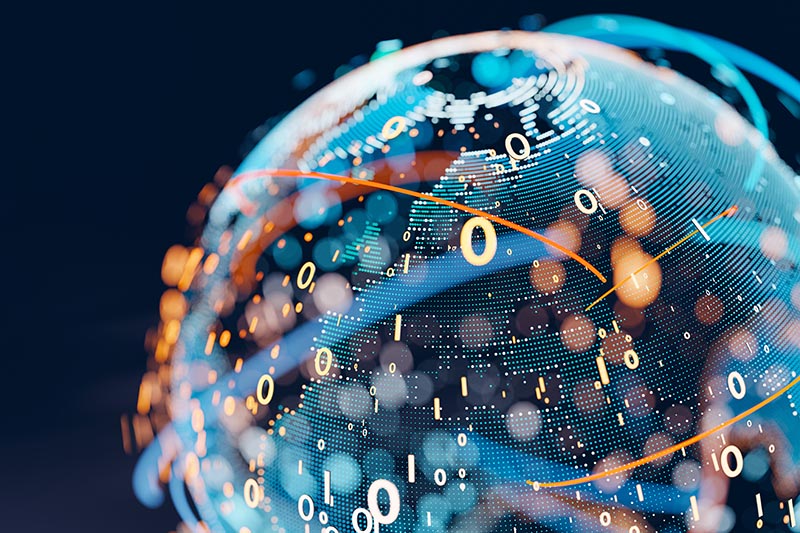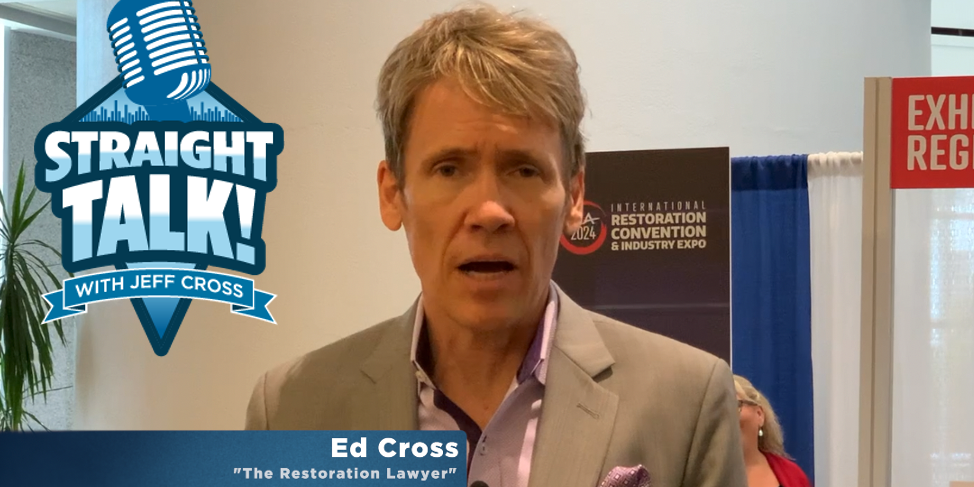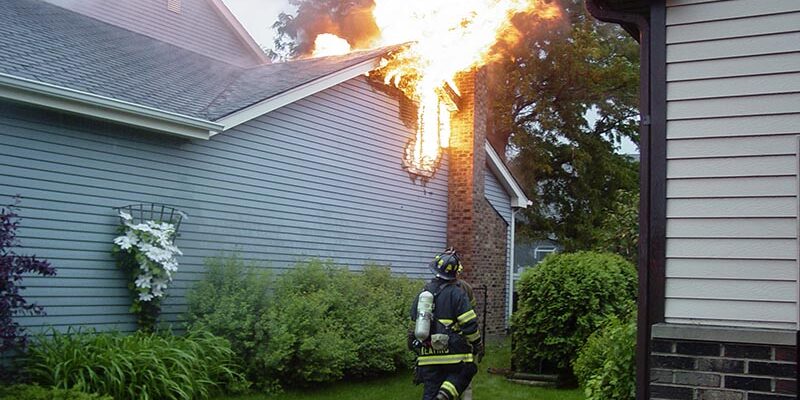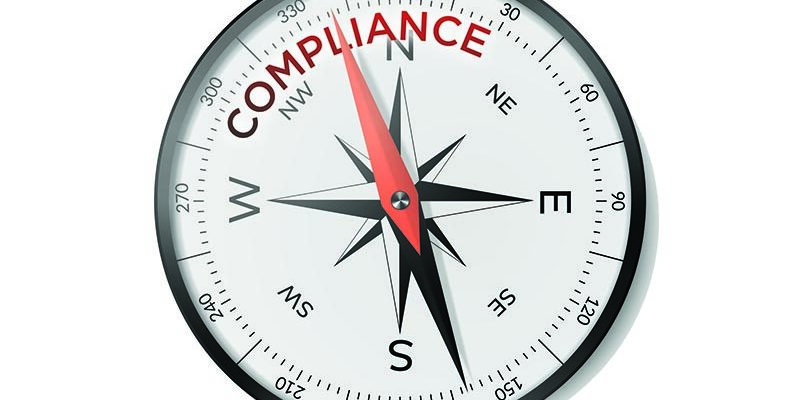Today’s Restoration Tech, Tools, and Tips

By Jeff Cross, Media Director
Starting up and growing a disaster restoration company is not for the faint of heart. It takes drive, determination, and an aggressive entrepreneurial spirit to make it all work. And, it takes knowledge of the tools of the trade and the available restoration technology to succeed.
The disaster restoration industry is innovative. When you visit an industry trade show, you can see it. It’s evident. The products, tools, and equipment that the modern restorer uses is always evolving and improving.
Cleanfax asked a select number of industry suppliers, experts, and consultants to share their thoughts on what a forward-thinking disaster restoration company should consider so they can succeed in a competitive marketplace.
Advancements of restoration technology
Technology in the industry is really starting to come together, according to Brandon Burton, the Standards Chair at the Institute of Inspection, Cleaning, and Restoration Certification (IICRC), and the Senior Principal of Industry Relations at CoreLogic. “We are finally seeing ‘connected’ equipment in our industry on a path towards critical mass. This is the barrier that, once broken, will forever change the way restoration, specifically, drying, is performed,” he says. “The technology has, for a long time, been available. However, once most equipment is capable, the barriers to adopting and leveraging the value of connected data will begin to fall.”
Brendan Kimmel, an IICRC-approved instructor, and a technical training instructor with Legend Brands, values the advancements in technology and, like Burton, sees connected equipment and data as a critical component of successful restoration. “Sensor-driven LGR dehumidifier technology has significantly improved drying job efficiency in two ways,” he notes. “The first is through increased water removal, especially when dehumidifiers use sensors to optimize performance across the full range of conditions, and second, by allowing automated access to drying progress and job conditions both on screen and remotely.”
At the same time, Kimmel values input from those in homes and buildings who must deal with restoration equipment during the drying process. Equipment makes noise, there’s no doubt about it. Not every family leaves their home when they have water damage, and not every commercial building is occupant-free during restoration. “Quieter operations is something restoration contractors have long requested, so that occupants won’t be tempted to turn off equipment and slow the drying progress,” he says. “Some newer dehumidifiers, air scrubbers, and air movers produce sound frequencies that are much less annoying to occupants, while performing at the same or better levels than noisier models.”
Mark Cornelius is the president of a restoration and cleaning firm, an IICRC-approved instructor, and president of the Emergency Mitigation Technician Academy (EMTA). He values restoration technology but feels more should be considered. “Technology has changed drastically, but what has not changed is the human factor. For example, LGR dehumidifiers. Most people, including owners, do not understand that once it is over 90° F that the technology gain is lost,” he explains.
In addition, Cornelius sees thermal imaging as a huge advancement over the years and part of the tech tool kit restorers use to improve accuracy and speed of inspection. However, “most people receive little to no training on how to use and interpret that information.” He feels technology has its place but so does proper training.
Chuck Boutall is an international trainer for the disaster restoration industry, and the director of education with the Restoration Technical Institute (RTI). He sees software as an integral part of emerging restoration technology. “There is a plethora of new software systems to choose from,” he says, “and these can bring great efficacy to a business. But they must be properly implemented and used by everyone in the company.” He sees instruments and tracking systems, from inexpensive thermal imaging cameras to remote monitoring software, as another critical component of successful restoration. “There has been a massive improvement in moisture data tracking systems from our inspection instrument and equipment manufacturers.”
Burton is excited about how the industry is progressing and knows that technology will continue to drive the industry. “Dehumidification, air movement, air filtration, and heating systems have continued to develop over time,” he explains. “However, their development has not seen a transformational shift for some time. The real significant paradigm-changing technological leap is happening right before our eyes as connected devices become the norm in our space.”
Software and the restoration process
Bill Weigand is an IICRC-approved instructor and a technical training instructor with Legend Brands. He likes what he’s seen with software development over the years, yet with a caveat. “Estimating software’s evolution has produced more uniformity in pricing, so insurance carriers and insureds have a more consistent cost for services,” he explains. “But on the negative side, there’s now less of an incentive for restorers to be creative and advance new methods of restoration. Also, different restoration companies often have very different overhead costs that aren’t reflected in a uniform pricing system.”
Kimmel sees software as a viable solution but not as something you simply purchase and think it will run itself. “Business owners should adopt job management software that requires limited setup and administrative management, while being robust enough to integrate project setup and reporting, billing, inventory and maintenance management,” he says. “Finding the right balance between simplicity and full features isn’t easy — but well worth time invested in researching software options.”
Lisa Lavender is the COO of the Restoration Technical Institute (RTI) and has appreciated advancements in software and technology as well. “The software and application available to our industry is vast. Integrations and collaborations in the industry are becoming a way for companies to build unique systems that support their business model and approach,” she says. “Some standard big picture things that are important in evaluating your options are: Ease of use, training and support, and meaningful reporting systems that give information and tools to efficiently support your operation. You should select the tools that help your team and business meet your company objectives and support growth.”
She lists these items as some of the many features and systems available in the market today:
- Comprehensive restoration software systems
- Digital surveying and online review management
- Job file management
- Customer communications
- Sketching
- Estimating
- Monitoring: Bluetooth and remote
- Accounting
- Tracking and managing: Vehicles and equipment
There are many more features and functions available in the industry. Lavender encourages restorers to make their own list to evaluate and build the ecosystem that works for them.
Burton sees the most important system is one that properly integrates the various data. “The full cycle should be connected,” he explains. “Schedules, clients, field data, subcontracts, estimates…straight through to invoicing and business analytics.” He says that if the system omits any of these, it is incomplete and requires double the work to maintain. “If it’s difficult and requires double work, then omissions and errors will yield unusable or inaccurate results.”
Remote monitoring
Burton is an advocate for remote monitoring and sees this type of technology as critical. “Remote sensing has always presented the barrier of being a ‘removed’ or ‘secondary’ technology,” he explains. “The technological barriers that came with a lack of full integration with the equipment and systems in a drying project made it expensive and cumbersome. Over the last few years, manufacturers are embracing the future of the ‘connected’ world.” As he says, this is beginning to allow restorers to leverage the benefits of remote sensing at a dramatically lower cost, while eliminating much of the technological barriers.
Kimmel feels the same way, that the industry has advanced in recent years and remote monitoring is a technology worth considering. “Using built-in wifi, our industry has truly leaped ahead to full remote monitoring and control of dehumidifiers and air scrubbers, including viewing and transmitting important drying data, and even allowing remote monitoring of airmover status and moisture detection,” he says. And with rising labor costs, remote monitoring can enable project managers to better prioritize and even skip some in-person job site visits while maintaining proper job management and company profits, Kimmel added.
On the flip side, Cornelius adds some cautions. “Remote monitoring has come a long way. However, it still has negatives such as connectivity and wifi issues,” he explains. “People also do not understand that it is a wonderful tool to increase accuracy and expedite monitoring of a project. Many people who come through my class think that they do not have to do daily site visits, and this also includes adjustors. Most people don’t understand that technology, for the most part, does not replace the site visit but makes it more productive.”
This doesn’t mean Cornelius isn’t a believer in remote monitoring technology. He explains that, instead of going to the project, collecting the data, interpreting the data, and then creating a course of action, with the proper use of remote technology, a tech can have an action plan in mind in advance. “That plan can then be confirmed at the arrival to the job site. Much like a fire fighter starts developing a plan of action from information given by dispatch prior to arrival on scene.”
He concludes: “However awesome remote monitoring is, and it is awesome, it is important as an aide to the job. It is another tool that can improve the accuracy of and quality of our jobs. It can provide real-time data which ultimately speeds up drying and should reduce cost and provide quicker drying results.”
3D imaging
One big advancement in technology the restoration industry is embracing is 3D imaging. Cornelius sees this as a game-changer. “This is literally an OMG moment,” he says. “I wish that we would have had this 30 years ago. For the most part, this has been the best thing since the invention of air,” he jokes. As Cornelius explains, the ability to do one inspection and then be able to do repeat site visits, as many as needed, from the comfort of your office is “a massive profit changer.” The ability to be able to see everything again that the camera saw in 360-degree 3D imaging basically “eliminates the ‘oh crap’ moment when you realize that you forgot to ‘get that angle.’”
Weigand values the impact of 3D imaging as well. “3D imaging is a huge time saver for companies, as it allows them to prepare a more accurate damage appraisal,” he explains. “3-D imaging automates the photo documentation process of structural dimensions, contents’ original condition and placement, and any pre-existing damage to structure or contents. It also improves transparency among the client, the insurance carrier, and the restoration contractor.”
Boutall is impressed with the advancement of 3D technology as well. “It’s handy for water losses, but fantastic for fire and mold, especially in commercial,” he explains. “The technology is awesome; I have used it over the years to map a complex loss due to its accuracy and detail. Now that the price is low per project, I highly recommend looking into these systems.” He notes that some 3D software companies are working on integration with remote monitoring systems, another game changer.
The air we breathe
David Hart is the founder and CEO of RamAir International and feels the restoration industry should also focus on the air we breathe, and the equipment affected during a loss. He explains: “The process of disaster and forensic restoration deals with structure, contents, and indoor air quality. Formerly often overlooked, the HVAC system falls under the categories of both structure and contents and has arguably the biggest influence on the quality and condition of the building’s indoor air.”
He notes that replacing HVAC systems has been a typical part of the restoration process, but with modern technology and HVAC and duct cleaning systems, restoration of those components should be considered. “A forced air HVAC system consists of return ducting, air handler(s), and supply ducting, which collectively, are both intricate and expensive to install and even more expensive to replace. With the design and evolution of more efficient cleaning equipment and the introduction of an effective decontamination system for HVAC, replacement is beginning to take a back seat to remediation,” Hart says. The solution? Look to add an HVAC decontamination system that can be used not just for routine cleaning, but for restoration as well.
The future of restoration and technology
Those who contributed to this article had final thoughts to share, looking at technology now and in the future. All are excited about the next chapter in restoration.
Burton: The future in one word? Data. As the world becomes more connected, data will drive advancements in the restoration space. This will include not only the efficacy of contractor work in the field, but also how manufacturers dial in and further specify the unique tools and technologies of the trade. The most critical element to today’s restoration firm is a solid paperless system. Hardware and physical tools are important to improve the work that you can perform but, honestly, I could mitigate and restore a structure even with tools that are a decade old. What I couldn’t do effectively while maintaining healthy business margins is manage training, compliance, documentation, reporting, collections, scheduling, resource coordination, and client relations. The technical and business demands of today’s market require a solid set of business systems.
Cornelius: For those who learn how to use technology and to use it correctly, it is limitless. In the end, our job is to provide a safe and healthy environment for our clients to go back to post-loss. My prediction is that some cleaning and restoration companies will understand this and provide a quicker and better result for the client. However, I watch most companies utilize the advances as purely crowbars to try and pry more money out of the system. In the end, the improvements and impacts depend on how we actually use the advances.
Lavender: We are often comfortable with our tools and proficient. Change is hard, and much of what we do in our work is habit. Habits are great until we want to change them. In general, most of the innovative technology that I have seen is easy to learn when there is a baseline of skill, knowledge, and experience. The hard part is implementing the new technology organizationally.
Weigand: The cost and availability of labor will drive the adoption of technology, to levels that are difficult to imagine. Robotic extraction may become a reality, just as robotic cleaning machines have made some facilities’ cleaning processes more efficient. Also, at some point, we’re likely to be able to use lasers to remove fire residue from many surfaces.
Hart: The development of capable, affordable equipment has made possible the remediation of HVAC systems in situations that formerly required costly and time-consuming removal and replacement. The result is a substantial savings to the building owner, as well as a notable profit increase to the restoration company, especially if they opt to perform the service themselves rather than subcontract it out. Fire, mold, meth/fentanyl, crime scene, unattended death, and bioterrorism remediation of HVAC has become so in-demand, globally recognized organizations such as the IICRC and the Microbial Warrior Academy have recently made it a part of their disaster restoration and bioremediation training programs.
Kimmel: Virtual reality (VR) headset technology will impact best practice training for new technicians and project managers. It could also be used for virtual remote help and decision-making consultations to guide less experienced restoration contractors through setting up and managing jobs.
Boutall: The perfection of the remote monitoring systems and software integrations will continue to make more powerful platforms, resulting in more efficient operations, reducing the overhead in operations while delivering information to decision-makers faster, resulting in increased customer satisfaction.












